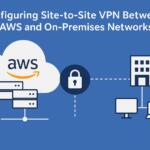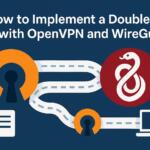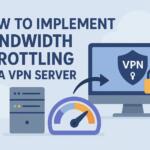Before you begin, ensure you have the following prerequisites in place:
- AWS account with appropriate permissions for managing VPCs and VPNs.
- GCP account with permissions to manage Virtual Private Cloud (VPC) networks and VPNs.
- Basic knowledge of networking concepts like routing, IP addressing, and tunneling protocols.
- Command-line tools installed, such as AWS CLI and Google Cloud SDK.
Step 1: Create a VPC in AWS
First, you need to create a Virtual Private Cloud (VPC) in AWS. This VPC will host the resources that will communicate with GCP.
aws ec2 create-vpc –cidr-block 10.0.0.0/16 –region us-west-2
This command will create a VPC with the CIDR block 10.0.0.0/16 in the us-west-2 region. You can modify the region and CIDR block as per your requirement.
Step 2: Set Up a VPN Gateway in AWS
In this step, you’ll create a Virtual Private Gateway (VGW) in AWS and attach it to your VPC.
aws ec2 create-vpn-gateway –type ipsec.1 –availability-zone us-west-2a –region us-west-2
aws ec2 attach-vpn-gateway –vpn-gateway-id vgw-xxxxxxxx –vpc-id vpc-xxxxxxxx
After the VGW is created and attached, retrieve its public IP address for the next configuration steps.
Step 3: Create a VPC in GCP
Similarly, you need to create a VPC in Google Cloud. For the sake of consistency, let’s use the CIDR block 10.1.0.0/16 in the us-central1 region.
gcloud compute networks create vpc-gcp –subnet-mode=custom –bgp-routing-mode=regional
gcloud compute networks subnets create subnet-gcp –network=vpc-gcp –range=10.1.0.0/16 –region=us-central1
Step 4: Set Up a VPN Gateway in GCP
Now, let’s create a Cloud VPN gateway in GCP.
gcloud compute vpn-gateways create vpn-gateway-gcp –network=vpc-gcp –region=us-central1
gcloud compute vpn-tunnels create vpn-tunnel-gcp –peer-address –ike-version 2 –shared-secret –target-vpn-gateway=vpn-gateway-gcp –region=us-central1 –local-traffic-selector 10.1.0.0/16 –remote-traffic-selector 10.0.0.0/16
Replace with the public IP address of your AWS VPN gateway and with a shared secret that both AWS and GCP will use to establish the VPN tunnel.
Step 5: Configure Routing in AWS
In AWS, configure the route tables to direct traffic destined for the GCP VPC through the VPN gateway. This allows AWS resources to communicate with GCP.
aws ec2 create-route –route-table-id rtb-xxxxxxxx –destination-cidr-block 10.1.0.0/16 –gateway-id vgw-xxxxxxxx
Step 6: Configure Routing in GCP
Similarly, in GCP, configure the routes to direct traffic destined for the AWS VPC through the VPN tunnel.
gcloud compute routes create route-to-aws –network=vpc-gcp –destination-range 10.0.0.0/16 –next-hop-vpn-tunnel=vpn-tunnel-gcp –next-hop-vpn-tunnel-region=us-central1
This step ensures that GCP resources can reach AWS via the VPN tunnel.
Step 7: Test the VPN Connection
After completing the configuration, it’s important to verify that the VPN tunnel is functioning correctly.
Ping an instance in AWS from GCP.
Ping an instance in GCP from AWS.
Check VPN status from both the AWS and GCP consoles.
If everything is configured correctly, the instances should be able to communicate with each other through the VPN tunnel.
Conclusion
At this point, you’ve successfully configured VPN peering between AWS and GCP. This setup enables secure, high-performance communication between resources in the two cloud environments. Ensure you regularly monitor the VPN tunnel and route configurations to maintain optimal performance and security.
We earn commissions using affiliate links.













